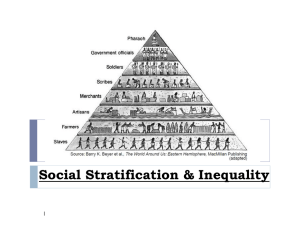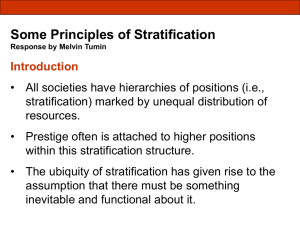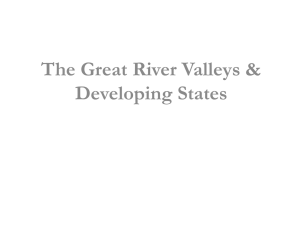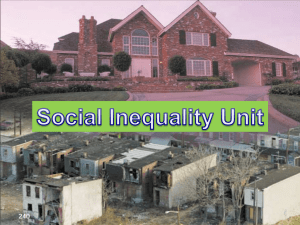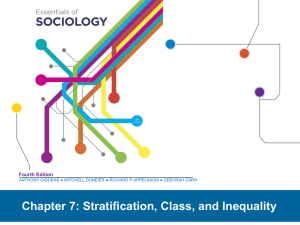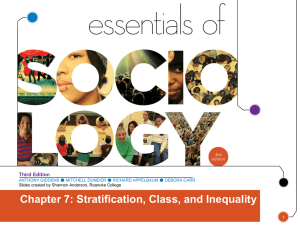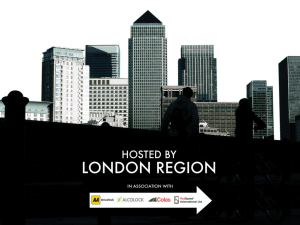File - Yesenia King
advertisement
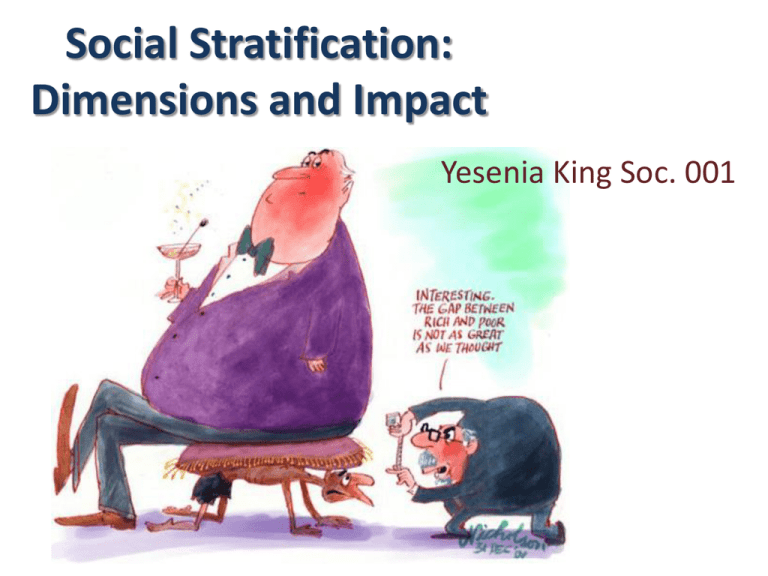
Social Stratification: Dimensions and Impact Yesenia King Soc. 001 Lecture Outline • • • • • • Social Stratification Dimensions of Stratification Explanations of Stratification Stratification in American Society Consequences of Stratification Social Mobility Social Stratification • System in which large groups of people are divided into layers according to their relative power, property, and prestige • Exists within society • Affects our life chances and orientations to life based on our class • Unequal and relatively permanent • Class: based primarily on the possession of money and material goods Questions for Today 1. What are the major social classes in the U.S.? 2. For which class is inherited wealth most important? 3. How are one’s education and occupation related to one’s social class? Dimensions of Stratification The Economic Dimension • Marx viewed economics as the foundation of social classes. • Social class is determined by one’s relationship to the means of production. – Bourgeoisie – the rulers; exploit – Proletariat – those who are ruled; revolt • Classless society • Believed that all other social institutions were based on the economic structure Dimensions of Stratification The Economic Dimension • Weber identified several different social classes based on the consequences of their relationship to the economic institution. • Wealth that consists of property (what we own) and income (money we receive). • Likelihood of achieving education, housing, health, food, etc., based on access to economic resources. Economic Inequality in America • “CEO Pay Jumped 11%” by Joann Lublin (WSJ) • For the past 30 years income inequality has been increasing. • The U.S. is now the most economically unequal of all major Western countries. • In 2009, 43.6 million people were living in poverty yet there were only 7 million millionaires and 800 billionaires. • Between 1990 and 2005 CEO income increased about 300% while workers income increased just 4.3% Dimensions of Stratification The Power Dimension • Power is the ability to control others, even over their objections. • Expert knowledge, special skills, fame, and social position • Mills – “Power Elite” – Big decision makers in U.S. society Dimensions of Stratification The Prestige Dimension • Prestige is the respect or regard people give to various occupations and accomplishments. • In US occupations are the primary source of prestige. • Occupations with highest prestige: – – – – Pay more Require more education Entail more abstract thought Offer greater autonomy • Valuable = people must acknowledge it. Explanations of Stratification Functionalist Theory • Stratification is inevitable – Positions have to be filled and some positions are more important than others – More important positions need to be filled by more qualified people = greater rewards • Critical Thinking – Where does Functionalist theory fall short? – Are some positions really more important? • Example: Entertainer vs. President; Electrician vs. Professor – Barriers to fair competition due to lack of access. • Example: Racial/Ethnic groups, women, the disabled etc. – Meritocracy? • Example: Best predictor of College entrance is family income not ability – Stratification is dysfunctional, thus not functional. Explanations of Stratification Conflict Theory • Stress that conflict, not function, is the basis of social stratification • Stratification exists because those with more power and wealth are willing to exploit others with less. • Critical Thinking – Where does conflict theory fall short? – Conflict theory is based on the class conflict described by Marx – Marx’s work not consistent with American system Symbolic Interactionism and Stratification • Social stratification persists only as long as its legitimacy is accepted. • Symbols explain the existence of stratification to the young and the reasons for people being located in particular strata. • Views of legitimacy are incorporated into an individual’s self-concept as well. Theoretical Perspectives: Social Stratification Stratification in American Society U.S. Class Structure -Gilbert and Kahl – Updated Weber’s Model – Capitalist Class – The Upper Middle Class – The Lower Middle Class – The Working Class – The Working Poor – The Underclass The Homeless Consequences of Stratification Life Chances –probability of achieving the positive things in life. – Life Expectancy – Health/Mental health; medical care Life Style – Family Life – Divorce – Child Rearing – Politics – Education – Criminal Justice System Social Mobility • Movement up or down the social class ladder • Difficult to do. – Minorities have been denied the opportunity for advancement • Significantly impacted by intergenerational assistance. – Upper class children = assistance from parents; less likely to move down – Lower class children = less likely to move up Social Mobility • Social mobility – the movement of individuals or groups within a stratification structure. – Intragenerational mobility – social class movement within the career of an individual. – Intergenerational mobility – social class movement from one generation to the next. – Horizontal mobility – change from one occupation to another at same status. – Vertical mobility – occupational or social class moves upward or downward. Systems of Social Stratification Slavery • Causes • Conditions – Temporary – Not Necessarily Inheritable – Not Necessarily Powerless and Poor • Slavery in the New World • Slavery Today Caste Stratification System • In a caste system – there is no social mobility – social status is inherited – statuses are ascribed or assigned at birth. • Example – India’s Religious Caste • Example – South Africa – Apartheid • Example – US – Jim Crow Laws Global Inequality • The United States has greater income inequality than most developed countries. • The gross domestic product (GDP) is a good indicator of classifying a nation’s economic category (high, upper-middle, lower-middle, low). How Do Elites Maintain Stratification? Soft Control vs. Force • Controlling People’s Ideas • Controlling Information • Controlling Technology Comparative Social Stratification • Social Stratification in Great Britain • Social Stratification in Former Soviet Union Global Stratification: Three Worlds (Old Model) • First World - Industrialized Capitalist Nations • Second World - Communist Nations • Third World - Nations that Don’t Fit in First Two Global Stratification: Three Worlds • Most Industrialized Nations • Industrializing Nations • Least Industrialized Nations How Did World’s Nations Become Stratified? • Colonialism • World System Theory • Culture of Poverty • Evaluating the Theories Maintaining Global Stratification • Neocolonialism • Multinational Corporations • Technology and Global Domination – Race Outcome Predetermined – Unintended Public Relations Strains in the Global System • Stream of Unanticipated Events • Contradictions Rear Up • Cracks in Global Banking

